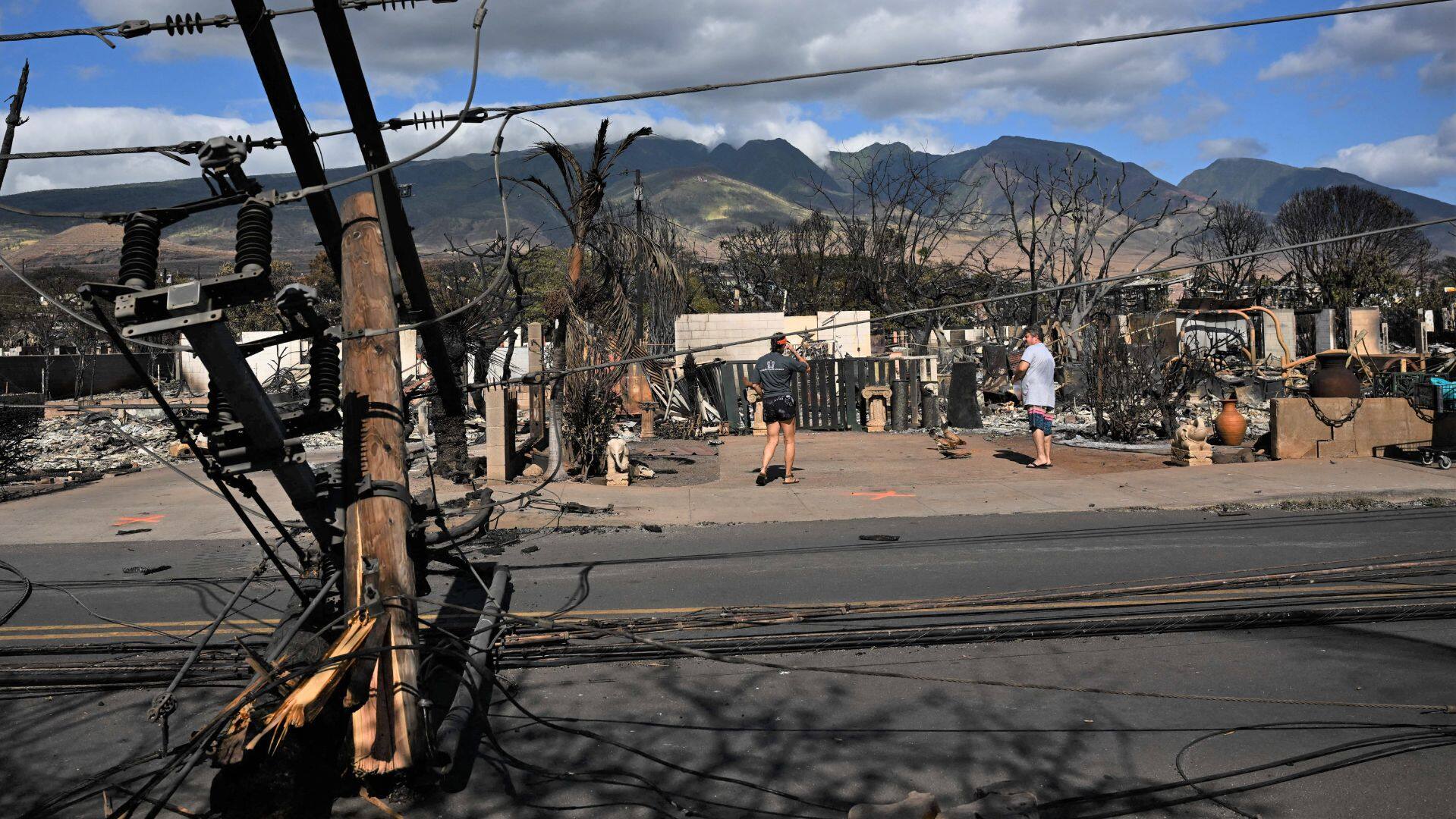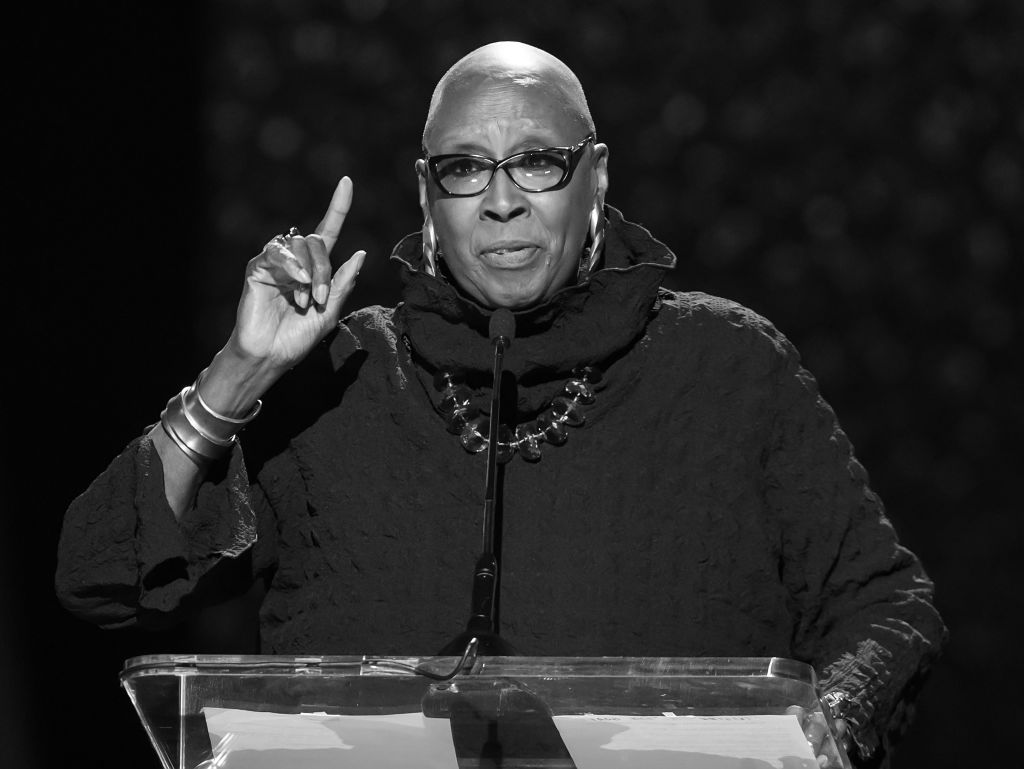In the first moments of the Maui fires, when high winds brought down power poles, slapping electrified wires to the dry grass below, there was a possible explanation why the flames erupted all at once in long, neat rows — those wires were bare, uninsulated metal that could spark on contact.
Videos and images analyzed by The Associated Press confirmed those wires were among kilometres of line that Hawaiian Electric Co. left naked to the weather and often-thick foliage, despite a recent push by utilities in other wildfire- and hurricane-prone areas to cover up their lines or bury them.
Compounding the problem is that many of the utility’s 60,000, mostly wooden power poles, which its own documents described as built to “an obsolete 1960s standard,” were leaning and near the end of their projected lifespan.
They were nowhere close to meeting a 2002 national standard that key components of Hawaii’s electrical grid be able to withstand 105 mile per hour (169 kilometre per hour) winds.
A 2019 filing said it had fallen behind in replacing the old wooden poles because of other priorities and warned of a “serious public hazard” if they “failed.”
Google street view images of poles taken before the fire, which broke out on Aug. 8, show the bare wire. It’s “very unlikely” a fully insulated cable would have sparked and caused a fire in dry vegetation, said Michael Ahern, who retired this month as director of power systems at Worcester Polytechnic Institute in Massachusetts.
Experts who watched videos showing downed power lines agreed wire that was insulated would not have arced and sparked, igniting a line of flame.
Hawaiian officials have reopened the highway leading into Lahaina after the historic town was devastated by wildfires last week. At least 110 people have been confirmed dead as searchers with cadaver dogs continue to comb the disaster area.
Poles in poor condition
Hawaiian Electric said in a statement that it has “long recognized the unique threats” from climate change and has spent millions of dollars in response, but did not say whether specific power lines that collapsed in the early moments of the fire were bare.
“We’ve been executing on a resilience strategy to meet these challenges, and since 2018, we have spent approximately $950 million [US] to strengthen and harden our grid and approximately $110 million on vegetation management efforts,” the company said.
“This work included replacing more than 12,500 poles and structures since 2018 and trimming and removing trees along approximately 2,500 line miles [4,000 kilometres] every year on average.”
But a former member of the Hawaii Public Utilities Commission confirmed many of Maui’s wooden power poles were in poor condition.
Jennifer Potter lives in Lahaina and until the end of last year was on the commission, which regulates Hawaiian Electric.
“Even tourists that drive around the island are like, ‘What is that?’ They’re leaning quite significantly because the winds over time literally just pushed them over,” she said.
“That obviously is not going to withstand 60, 70 mile per hour winds.”
Sixty per cent of the utility poles on West Maui — 450 of 750 poles — were still down on Aug. 14, according to Hawaiian Electric CEO Shelee Kimura at a media conference.

Lawsuits ahead
Hawaiian Electric is facing a spate of new lawsuits that seek to hold it responsible for the deadliest U.S. wildfire in more than a century. The number of confirmed dead stands at 115, and the county expects that to rise.
Lawyers plan to inspect some electrical equipment from a neighborhood where the fire is thought to have originated as soon as next week, per a court order, but they will be doing that in a warehouse. The utility took down the burnt poles and removed fallen wires from the site.
This was a “preventable tragedy of epic proportions,” said attorney Paul Starita of the California firm Singleton Schreiber, who is lead counsel on three of the lawsuits.
“It all comes back to money,” he said. “They might say, oh, well, it takes a long time to get the permitting process done or whatever. OK, start sooner. I mean, people’s lives are on the line. You’re responsible. Spend the money, do your job.”
Hawaiian Electric also faces criticism for not shutting off the power amid high wind warnings and keeping it on even as dozens of poles began to topple. Maui County sued Hawaiian Electric on Thursday over this issue.
Michael Jacobs, a senior energy analyst at the Union of Concerned Scientists, said that with power lines causing so many fires in the United States: “We definitely have a new pattern, we just don’t have a new safety regime to go with it.”
A class-action lawsuit has been filed against Hawaiian Electric in the aftermath of deadly wildfires on Maui. The lawsuit alleges the power company ‘chose not to de-energize power lines’ during weather warnings.
Electrical wires in fire risk areas
Insulating an electrical wire prevents arcing and sparking, and dissipates heat.
Other utilities have been addressing the issue of bare wire. Pacific Gas & Electric was found responsible for the 2018 Camp Fire in northern California that killed 85 people. The disaster was caused by downed power lines.
Its program to eliminate uninsulated wire in fire zones has covered more than 1,900 kilometres of line so far.
PG&E also announced in 2021 it would bury more than 16,000 kilometres of electrical line. It buried approximately 290 kilometres in 2022 and is on pace to do around 560 kilometres this year.
Another major California utility, Southern California Edison, expects to have replaced more than 11,000 kilometres, or about 75 per cent of its overhead distribution lines, with covered wire in high fire risk areas by the end of 2025.
It, too, is burying line in areas at severe risk.
Hawaiian Electric said in a filing last year that it had looked to the wildfire plans of utilities in California.
Many Lahaina wildfire survivors say they had no official warning before the blaze was upon them. As the number of people killed continues to rise, Andrew Chang explains why there are growing questions about the emergency response.






















Discussion about this post